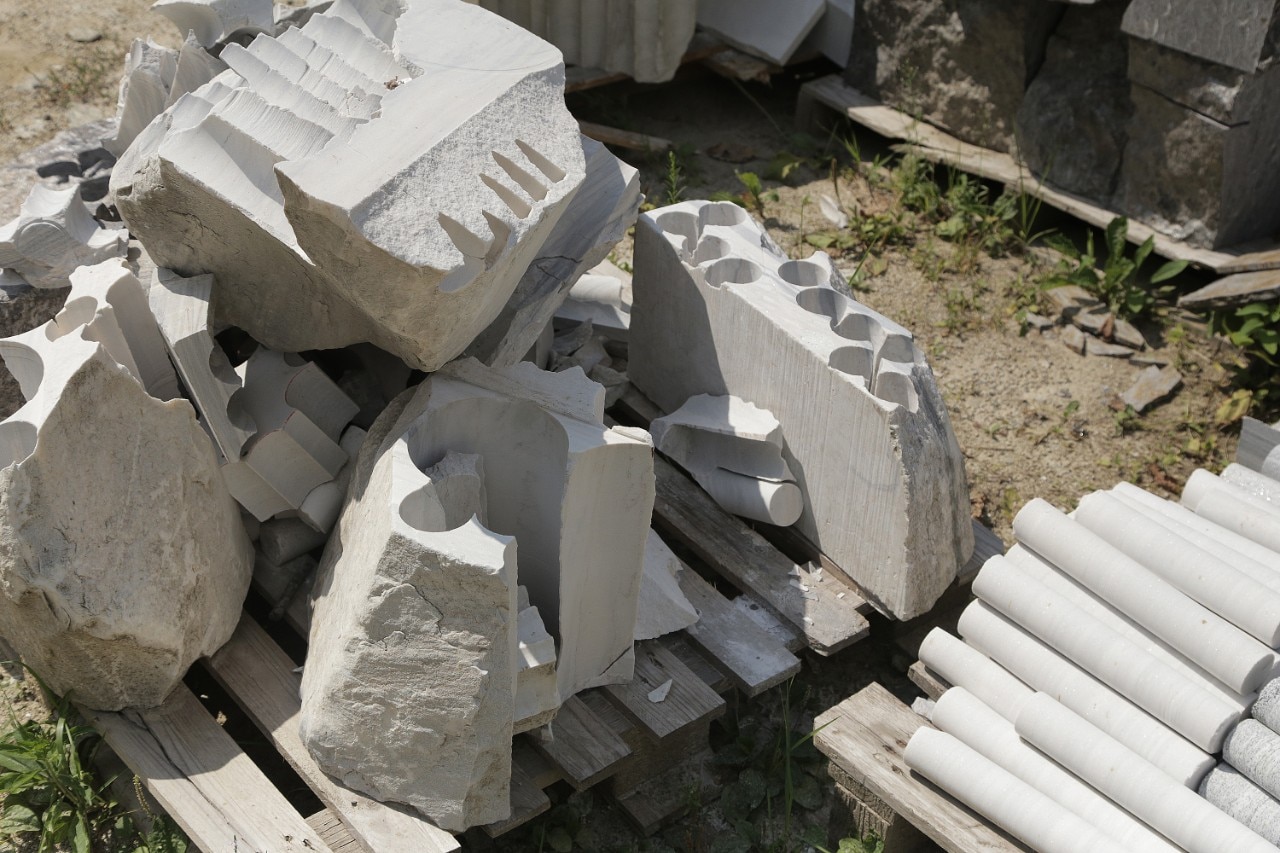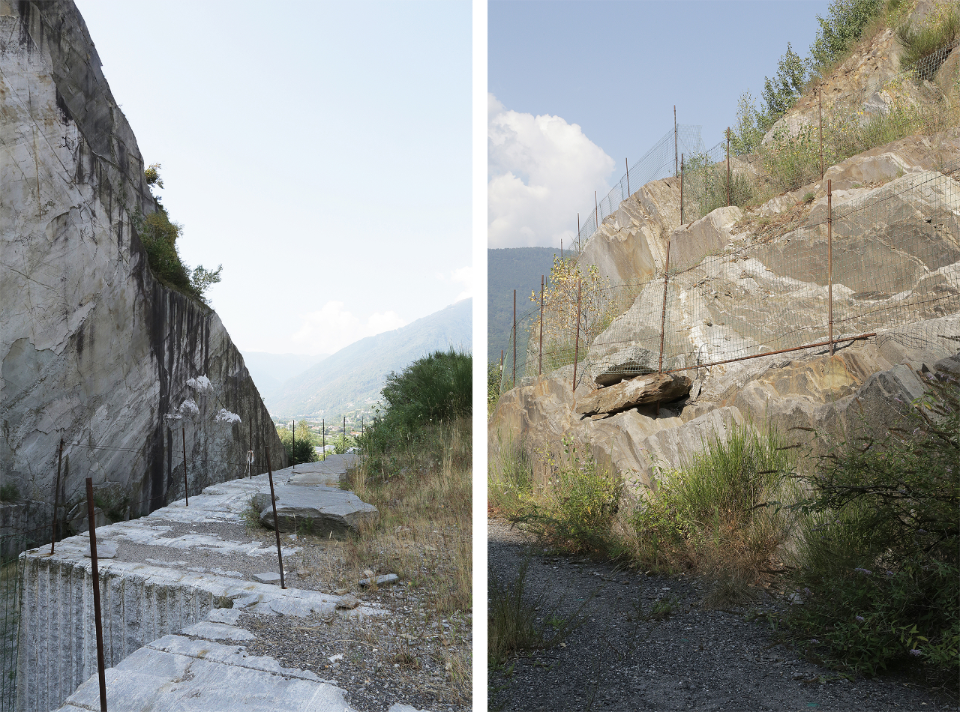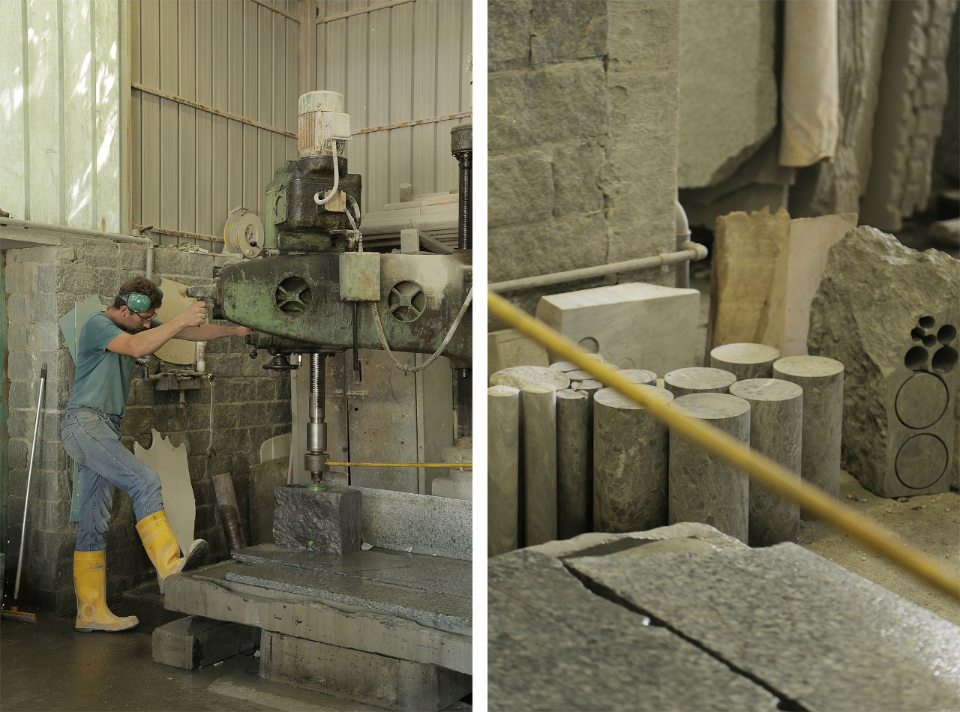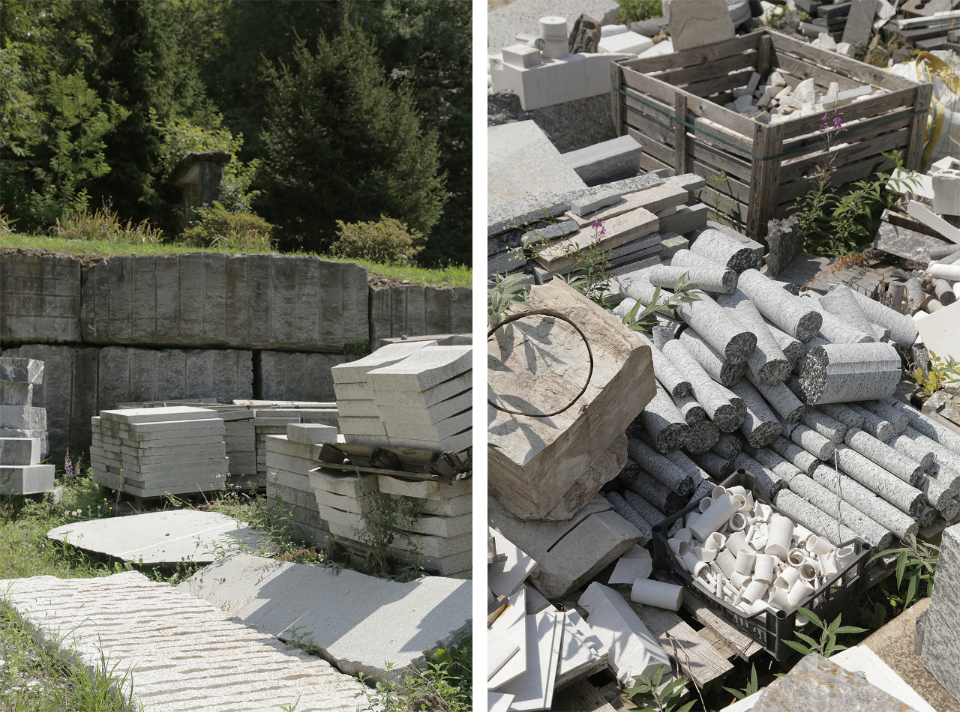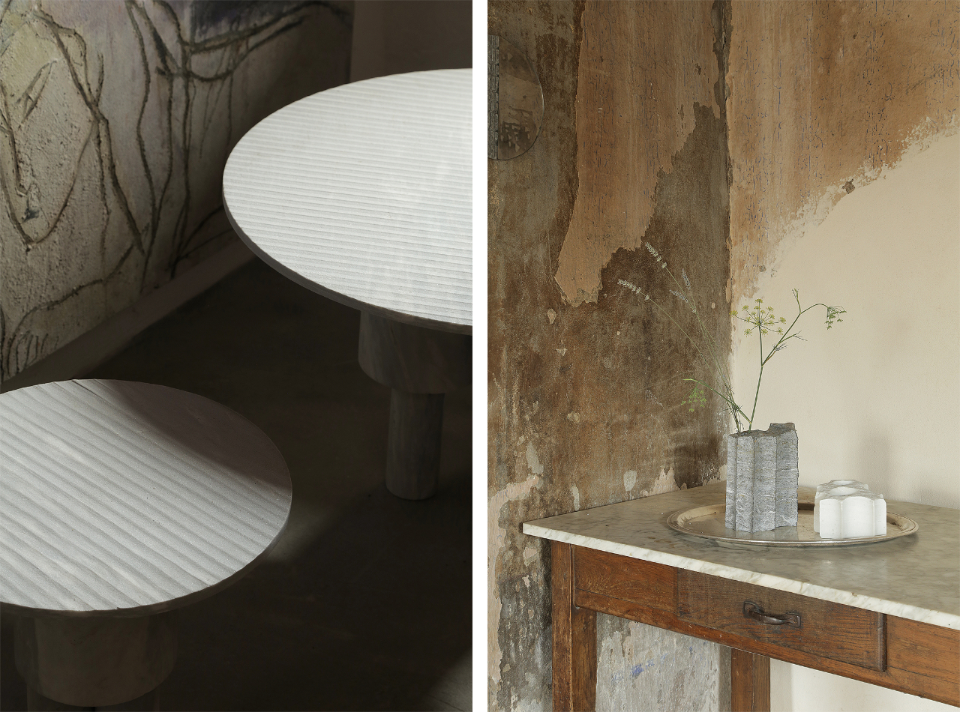In an era of fierce territorial branding and carefully–crafted identities, the Val d’Ossola – in the upper Piedmont region (Italy) – strikes with its spontaneous and sober personality. Land of workers and entrepreneurs, the valley has been dedicated to the extraction of stone – such as granite and marble – since Roman times; the one used for the continued restoration of the Duomo cathedral in Milan also comes from here. If, on the one hand, the quarries have always supported the economy of the region, on the other hand, they had profound repercussions on its landscape. Like large scars that mark the mountains, the quarries are the visible and tangible testimony of the abundant consumption that we make of the natural resources of this territory. A consumption that – as in any other industrial activity – also produces many leftovers, which in this case consist of large stone blocks discarded because not suitable for use in traditional production cycles due to cracks or surface imperfections.
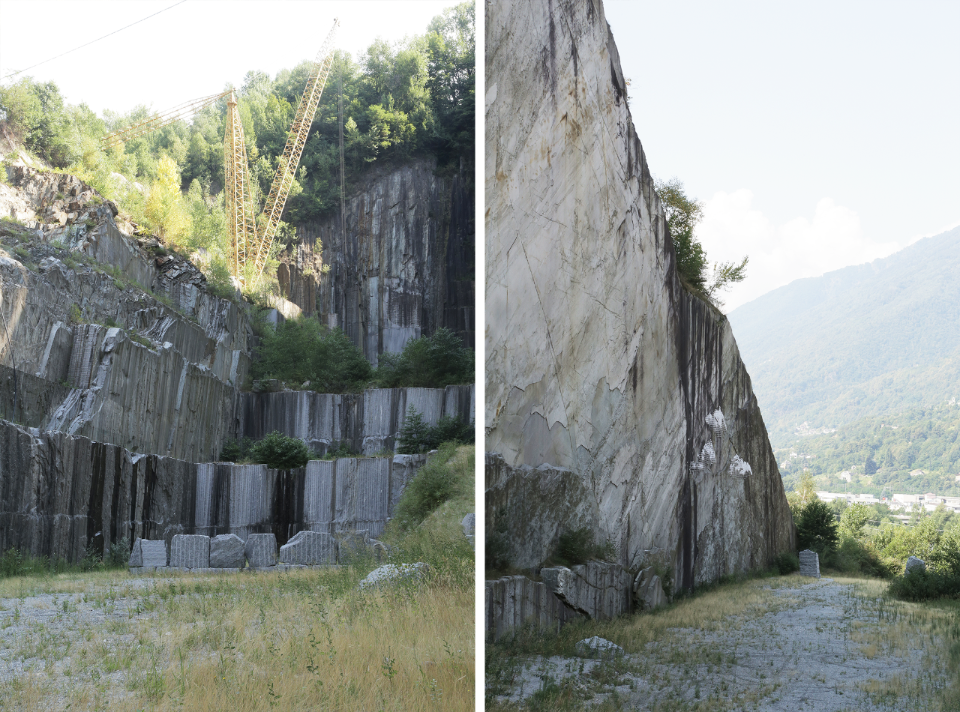
Overlooking the Toce River, which crosses the valley before entering Lake Maggiore, for the past three years, Pietre Trovanti has been focusing its design research on the recovery and enhancement of these leftovers. Born as the creative and socially–conscious spin–off of the historical company Moro Serizzo, the young entrepreneurial adventure is led by Tiziana Scaciga – granddaughter of the founder, Giovanni Moro – who adopts a careful approach which echoes the humble and honest character of the valley in which the company operates. “We chose the name Pietre Trovanti (which in English could be translated with ‘finding stones’, Ed.) because we wanted to tell the story of my family and the territory that unites me, Luca Antonini and Andrea Scotton – who follow this project with me,” says Scaciga. “When my grandfather, who was a master stonemason, arrived in the Val d’Ossola at the beginning of the twentieth century, before opening his business with his sons, he started to work with boulders: rocks that were and are still found in the Alpine and Pre–Alpine areas. At that time craftsmen used to work the stones directly on site, cutting the major part of the material before transporting it to the valley where it was finished to meet specific functions: millstones, portals, floors, etc. What is important to note is that an integral part of that manufacturing process, and the inclination of the workers, was to use the boulders in their entirety, without waste,” underlines the entrepreneur.
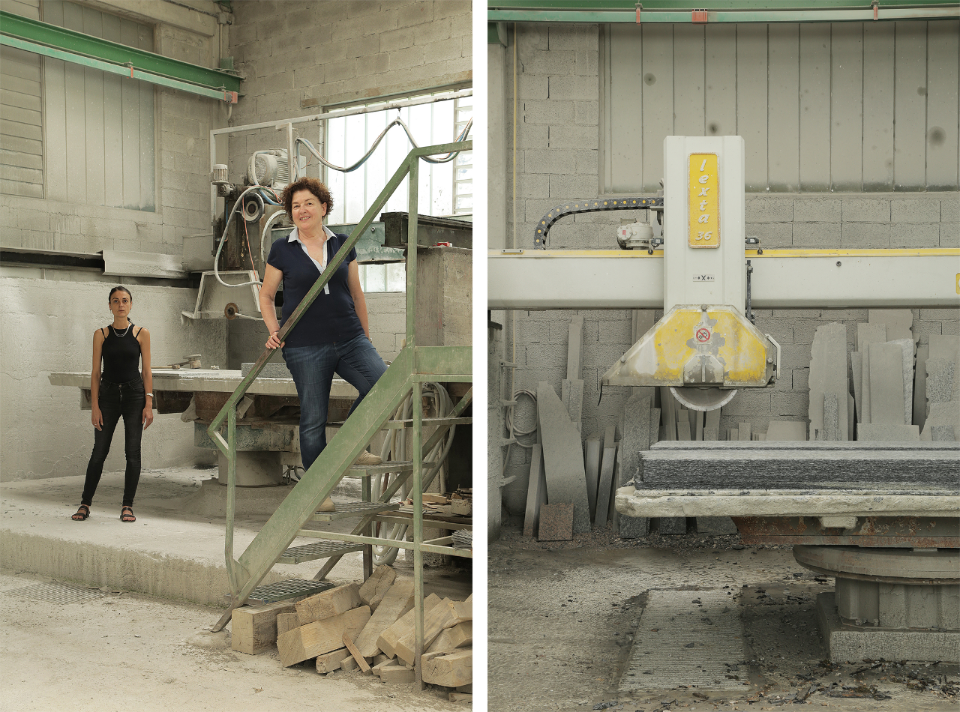
Following what her grandfather had started, with Pietre Trovanti, Scaciga attempts to “deepen the environmental, human, social, historical and cultural value that these irregular blocks can have once recovered and transformed into objects that reveal their unexpected potential.” Collaborating with Italian and international creatives - such as studio Zaven, Davide Crippa from studio Ghigos and Josefina Muñoz - the company develops design collections in which the idea “is not solely to produce objects, but to use the expedient of production to talk about a value path in which the themes of unrepeatability, irregularity, metamorphosis and craftsmanship emerge,” says the entrepreneur. As Scaciga points out, working with stones that are not suitable for a serial production process means having profound knowledge and respect for the subject. “Often, when referring to waste stones, one is led to believe that these have a lower value; the reality is that they are simply materials that do not fit traditional commercial logics and for which a great design competence and specific attention are needed in selecting and processing them,” affirms the entrepreneur. A reason that explains why the objects of Pietre Trovanti have higher production times and costs compared to those produced in series and are intended for galleries and shops that operate in the world of collectible or limited series design and that embrace the values of the company linked to upcycling and imperfect appearance.
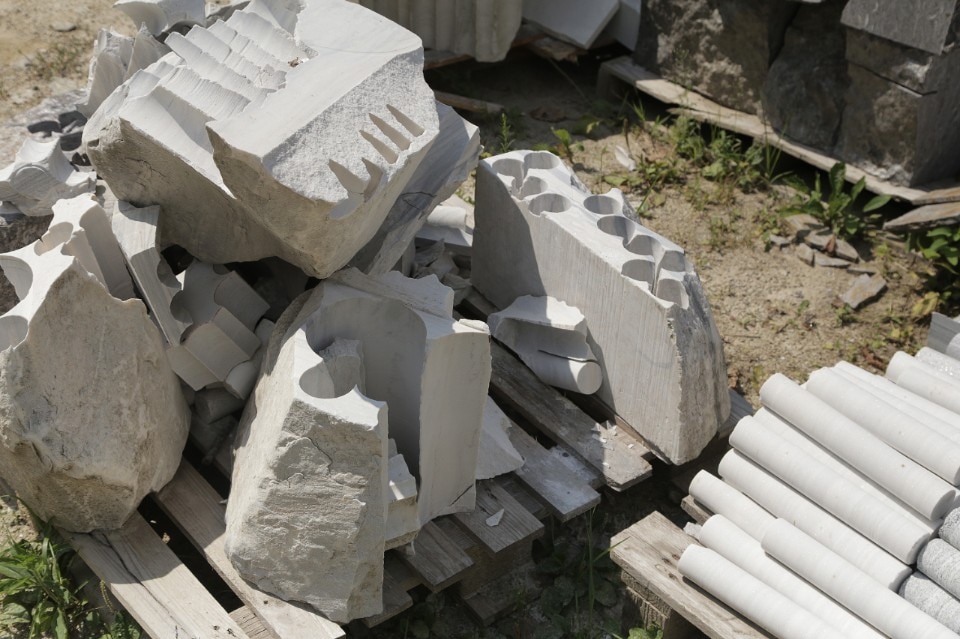
Among the galleries that have begun to put forward projects that embrace the principles and aesthetics of the circular economy, is Mint Gallery, in London. “The market for one-off and collectible design is a niche market which is steadily growing. In the past, the circular economy was not a focus for clients rather an appealing addition to the design piece itself”, affirms Lina Kanafani, the founder. “As a gallery, we have been slowly shifting to the circular economy, and currently 60% of our collection is created with recycled elements. To market such products, it is important that they are aesthetically pleasing and express individuality”, reveals the gallery owner. “The story and research behind the products are almost as important as the result. Our audience is interested in these features, which is why we highlight the handmade aspect and natural imperfections as their unique selling point,” underlines Kanafani. In this sense, “the 'Game of Stone' tables (that the gallery presents in its catalogue, Ed.) are a brilliant example of using marble off-cuts to create a unique and well-balanced design. Each table has its individual variations due to the nature of the material.”
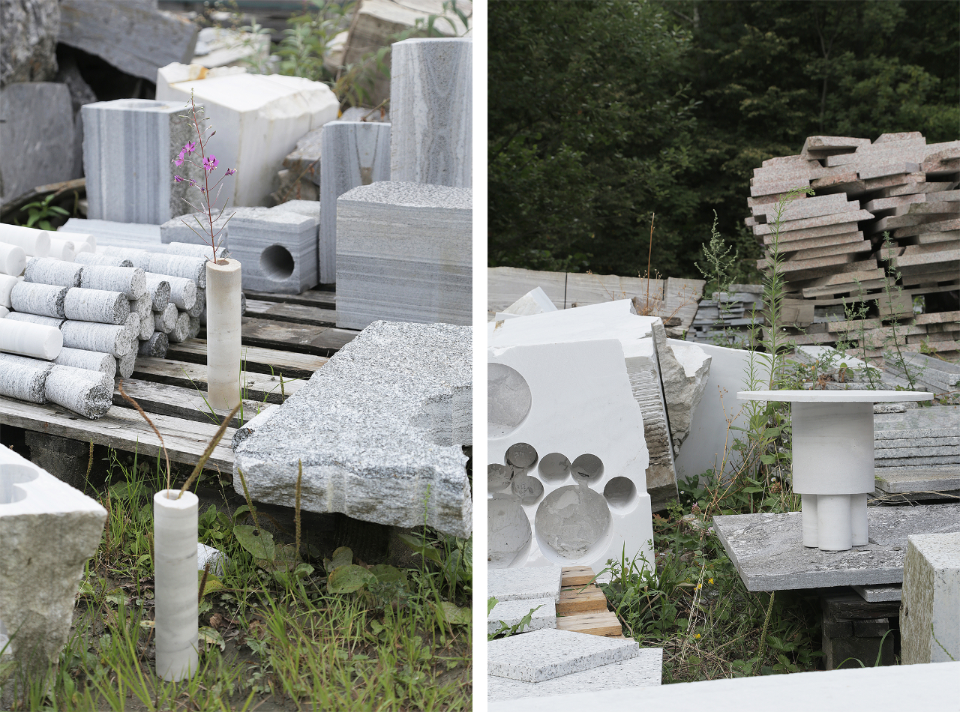
If imperfections seem to be a key feature in the world of collectible design, it is interesting to note that this same fascination is also reflected in the traditional furniture market. Last year, the exhibition Viva la Diferencia! – curated by Ana Dominguez Siemens at the Centro Centro Cibeles in Madrid (16.02 - 20.05.2018) – highlighted it effectively: currently, one of the most significant trends in the home design business is the preference for objects – artisanal, but also industrial – capable of transmitting the unpredictable and irregular beauty of craftsmanship. Among the projects on display, the Industriell imperfect vases collection designed by the Dutch Piet Hein Eek for Ikea was a valuable example in that sense.
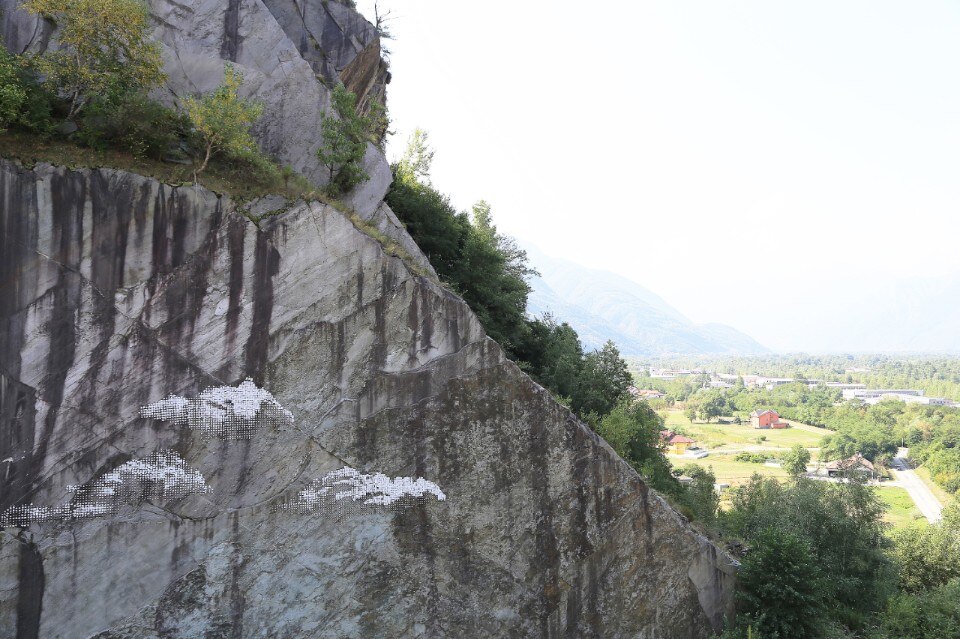
In short, the work of Pietre Trovanti is commendable because it invites us to review our notion of beauty giving voice to materials and shapes that would typically be discarded, but also to artisanal and creative approaches that focus on slow and careful material exploration. Nevertheless, one must remember that its business also fits into a regional economy which, as it was pointed out at the beginning of the article, has significant repercussions on the environment that generates it and potentially offers it an alibi to continue to produce recklessly. Instructive, in this sense, is the example of recycled plastic: presenting itself as a “guilt-free” material, it somehow exempts us from any responsibility and allows us to continue to feed the supply chain upstream of its production. Whatever your point of view, this autumn two events will allow you to get to know the work of Pietre Trovanti closely: the Crossovers event by Adorno in London (London Design Fair, 19-22 September 2019), where the pieces of the Game of Stone collection signed by Josefina Muñoz will be on show; and the Re-St Residenza d’Artista show (La Mole, Ancona, 28 September - 20 October), during which the artist Marta Palmieri will reveal the outcome of her research about the upcycling of sawdust slime that she has carried out in the past months in collaboration with architect Carlo Antonelli and Pietre Trovanti.
- Project:
- www.pietretrovanti.it


